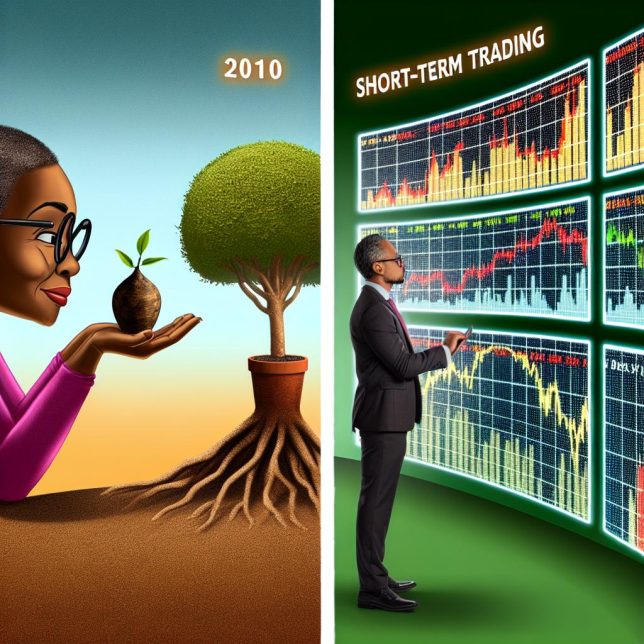Understanding Long-Term Investing
Long-term investing is a widely utilized strategy in the financial world, often involving the purchasing and holding of a diverse range of assets, which may include stocks, bonds, or mutual funds. The concept is centered around the idea of building wealth gradually over an extended timeframe, typically five years or more. This approach relies on the elements of appreciation, dividends, interest, and the reinvestment of earnings to build toward desired financial goals.
The Benefits of Long-Term Investing
A significant advantage of long-term investing lies in the power of compound interest. When investors reinvest their dividends and interest, they can significantly boost their returns over time. This reinvestment allows investors to earn returns not just on their initial capital but also on the accumulated interest from previous years. This compounding effect can lead to substantial growth of the investment portfolio over the long term.
Moreover, long-term investing often results in reduced transaction costs. Investors who trade less frequently incur fewer fees, thereby preserving more of their capital for growth. Additionally, long-term investors benefit from lower capital gains taxes since holding investments for more than a year typically qualifies for lower tax rates than short-term holdings. This can considerably enhance the overall returns on investment.
Long-term investors also benefit from a reduced influence of daily market volatility. While markets can be unpredictable in the short term, with frequent ups and downs, the long-term trend has historically been upward. This position enables long-term investors to remain relatively unfazed by short-term market fluctuations, focusing instead on the overarching trajectory of their portfolios.
Strategies for Long-Term Investing
One of the most effective strategies for long-term investing is the buy-and-hold approach. This involves purchasing a well-diversified portfolio and maintaining these holdings regardless of short-term market movements. This strategy is predicated on the belief that, despite temporary downturns, markets will generally rise over long periods.
Investors often opt for index funds or exchange-traded funds (ETFs) to achieve diversification cost-effectively. Index funds and ETFs provide exposure to broad market indices, reducing the risk associated with individual stock selections. Moreover, these funds often come with relatively lower management fees compared to actively managed funds, further enhancing their attractiveness to long-term investors.
Exploring Short-Term Trading
Contrasting with long-term investing, short-term trading focuses on taking advantage of market fluctuations over much shorter timelines, ranging from mere minutes to several months. This method is oriented toward achieving rapid profits by capitalizing on market inefficiencies and price changes.
Benefits of Short-Term Trading
In short-term trading, opportunities exist for rapid profits by leveraging both upward and downward movements within the market. Traders capitalize on short-lived price changes, allowing them to make profits irrespective of whether the market is trending upwards or downwards. This capacity to profit from volatility is one of the prominent attractions of short-term trading.
However, successful short-term trading necessitates precise timing and a comprehensive understanding of market conditions. It requires traders to have an in-depth knowledge of technical analysis, enabling them to interpret market signals accurately and make timely decisions.
Strategies for Short-Term Trading
Short-term traders utilize various strategies predominantly based on technical analysis to identify price trends and patterns. Some popular strategies include day trading, swing trading, and scalp trading.
1. **Day Trading:** This involves buying and selling securities within a single trading day. Day traders aim to capitalize on small price movements, often executed using leverage to amplify profits.
2. **Swing Trading:** Unlike day trading, swing trades are held for several days or weeks. Swing traders attempt to profit from expected price movements within a specific time frame.
3. **Scalp Trading:** Scalp traders make numerous trades in a single day, aiming to profit from small price gaps.
Each strategy necessitates distinct techniques, time frames, and requirements for execution, suiting varying preferences and market understandings.
Comparing Risk Levels
Both long-term investing and short-term trading entail inherent risks, although they differ significantly in exposure and nature.
Long-Term Investing Risks
In long-term investing, market volatility stands as the primary risk factor. Despite this, historical data suggests that markets generally recover and grow over extended periods, potentially mitigating these risks. Long-term investors, therefore, rely on an insight that time in the market may smooth out volatility and lead to significant returns.
Short-Term Trading Risks
Short-term trading is widely deemed riskier due to the necessity of accurate market timing and constant volatility exposure. The short nature of trades can lead to higher transaction costs and more frequent market changes. As such, precise execution and robust risk management strategies become critical for minimizing potential losses. Traders must stay alert and agile, ready to act as market conditions shift.
Time Commitment and Skills
Long-term investing generally demands less frequent monitoring, making it suitable for those with limited time to commit to market analyses. In contrast, short-term trading demands active, continuous involvement, requiring traders to stay updated with market conditions and make rapid decisions based on emerging trends.
Choosing the Right Approach
Deciding between long-term investing and short-term trading depends considerably on one’s personal objectives, risk tolerance, and time availability. Individuals aiming to build wealth gradually with minimal active management might find long-term investing more aligned with their goals. On the other hand, those with the requisite expertise, time, and affinity for risk may be more drawn to the dynamic nature of short-term trading.
Conclusion
Comprehending the distinct attributes of long-term investing and short-term trading is essential for crafting an effective financial strategy. Both approaches provide unique benefits and challenges. Hence, individuals are encouraged to scrutinize their financial objectives, risk appetite, and schedule availability to determine which strategy best aligns with their investment aspirations. Through careful assessment and planning, one can better position themselves to achieve their financial goals.
This article was last updated on: March 23, 2025

